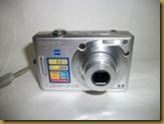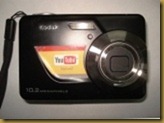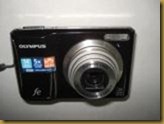I have come a long way from the days when I had to beg, steal or borrow one of my father’s 35 mm format SLR Cameras. I had a choice of two cameras, an Olympus OM 10 camera of the year 1984, and a Nikon F-806 camera of a much later version. The Canon QL-19 camera was a workhorse manufactured in 1966, and it had a non-detachable but highly versatile lens! Although some may claim that the quality of the photographs of the 35mm roll cameras was better than the best of today’s Digital SLR cameras, where they were found lacking was that you were limited to 36-38 exposures per roll, and of course it was difficult to take a sneak preview of the photograph you had taken. You, could take a preview of the negative, before the actual printing took place, but the then negatives didn’t really give an accurate image, so then you had to go for contact prints, and after that the actual prints! The resolution of Digital Cameras might not be as good as the roll cameras, but then where they score over their predecessors is their versatility! You can not only see a preview of the photograph taken by you, but also you can bracket exposures and take the same photograph with different settings, since you are not limited to 36 exposures. Added to all this is the attraction of being able to print your own photographs on the Ink-Jet printer, and provided you have the correct photo-paper, you might even get good quality prints from home itself.
Where the DSLR scores over its predecessors is that photographs taken on the digital camera can easily be uploaded onto your favourite website or can be shared amongst relatives and friends. A lot of editing can be done on the soft copies of photographs at home itself. Before graduating to Adobe Photoshop the Amateur Photographer can experiment with some of the bundled software that come with the laptop like the Microsoft Office Picture Manager, or Windows Photo Gallery or the editing software bundled with the Digital Camera. Before experimenting with software, however it is very important to be able to understand the working of the camera, and to learn the importance of lighting. The idea is to take the best photographs so that less touching up and cropping is required! One of the cardinal sins is to take photographs with the subject pat in the centre of the photograph. The best ratios are 2/3 or 3/4 position of the subject with respect the to rest of the photograph. While photographing human subjects, birds, insects and animals, it is a good idea to focus on the eyes. Having an autofocus makes things easier for the candid photographer, but then there are situations with tricky lighting conditions where the autofocus doesn’t work at all! In such situations, you will get better results when you switch to manual focus! Often the view you get on the LCD screen is a simulation of what you are photographing, so you need a view finder or an eye-piece which will show you a more real view of what is being photographed! Rough idea of exposures means that an f-22 aperture will give you the best depth of field ideal for landscapes, while an aperture of f- 5.4 will give you more blurring of the back-ground, ideal for close-ups. Bokeh or intentional blurring of everything except the eyes of the subject or any other object which is to be high-lighted is achieved by using a bigger aperture. The Canon 1100 D DSLR Rebel camera is an ideal entry level camera which offers both manual as well as automatic settings which give the photographer control over a large number of settings. It also makes good sense to have of at least two lenses, ideally a lens range of 18-55mm and another kit lens of the range of 55-250mm. The second kit lens is ideal for zooming or telephoto options, while the first option offers wide-angle ranges preferably for portraits! The first photograph was taken on a Canon 1100 D DSLR camera with a zoom lens set at its 250mm setting while the second shot of poppies was taken on a telephoto lens at the 96 mm setting:



One misnomer today is that the greater the mega-pixels of the sensor, the better the photograph. The reality is that the quality of the photograph depends on the number of pixels combined with the optics. Smaller cameras cram a large number of pixels on smaller sensors. This compromises the quality of the image. The larger the sensor, the better the image! Camera shake is another issue, especially when using a long telephoto lens. Later camera makers have come up with an innovative technology where camera shake is minimised with servo motors which try to minimise movement with the help of servo motors. The use of a tripod, however bulky will help give you even sharper images! For example, the photographs of the moon and the rising sun given below were taken on a Nikon L-100 Coolpix, 10 megapixel camera placed on a tripod:
Compact digital cameras which are fully automated come in handy when you have to take snaps of the spur of the moment as is exemplified by this photograph which was taken on a Nikon L100 Coolpix Camera (which although is not a compact by any means as it has a large sensor, good optics and a 15X optical zoom) on the spur of the moment:
Today almost anyone can take photographs thanks to a large number of cell-phones which come with versatile cameras with megapixel sensors ranging till 12 to fourteen million pixels! Some of these mobile phones are even equipped with an effective flash. Cell phones are easy to carry and so they are always present to take the most remarkable and exclusive photographs which even professionals might not be able to take, because, obviously it would take a lot of time taking out that DSLR from the bag, and then setting the exposure would take too long!
Technorati Tags: Towards more serious photography










I think this is an amazing write up!
ReplyDelete